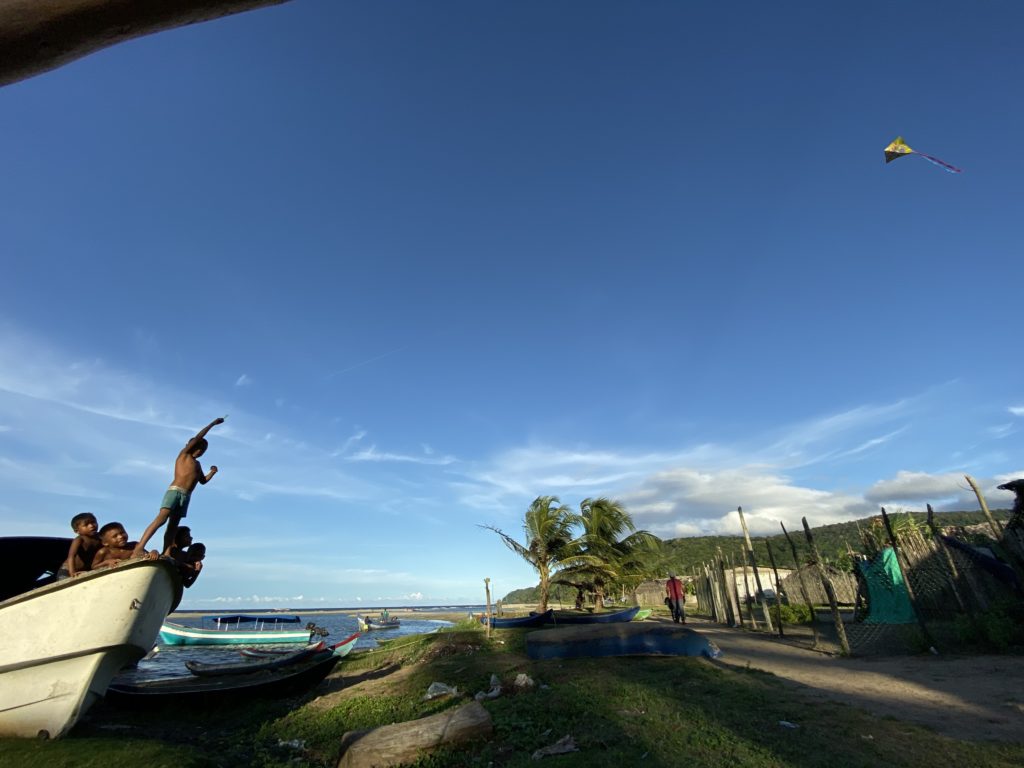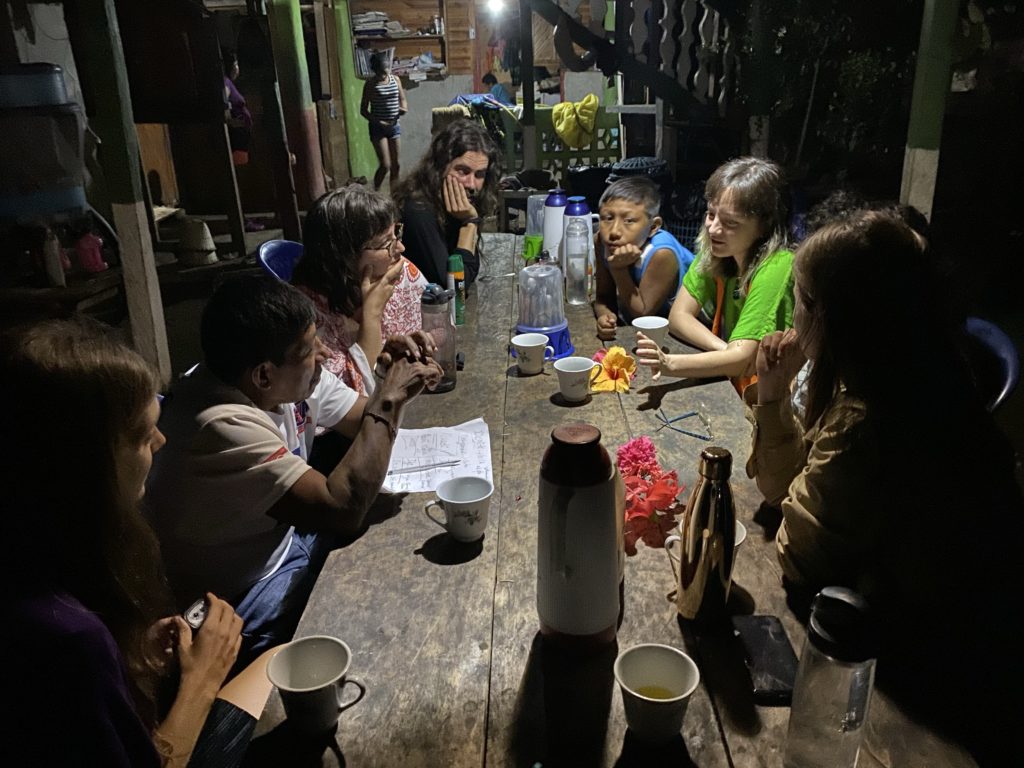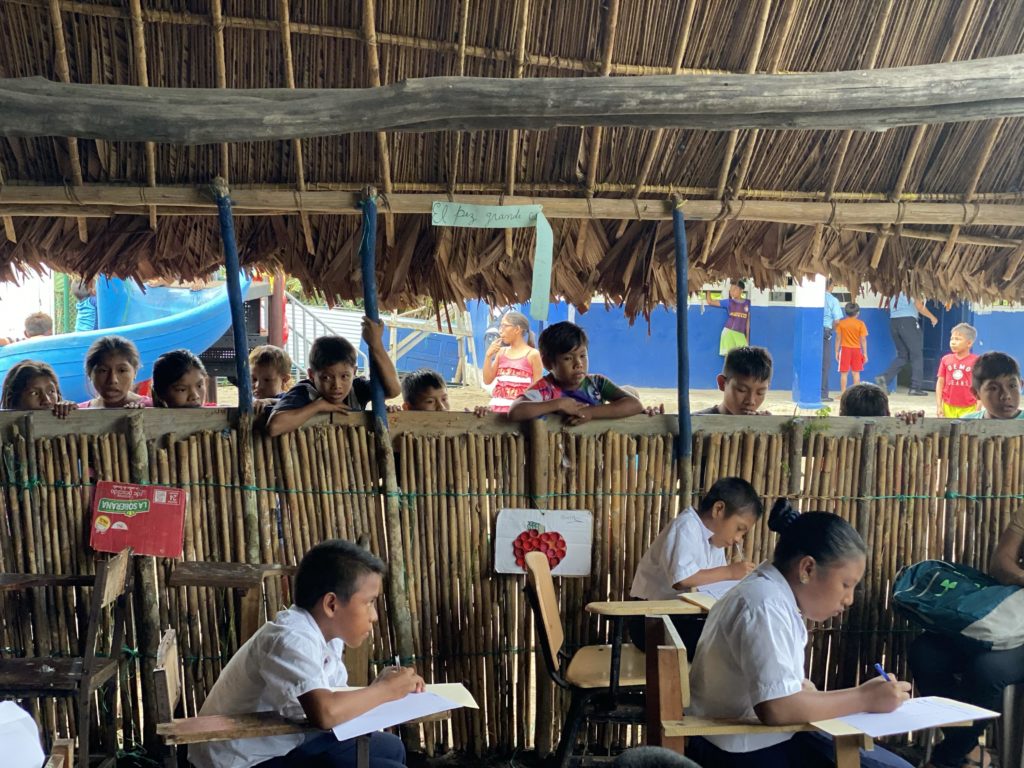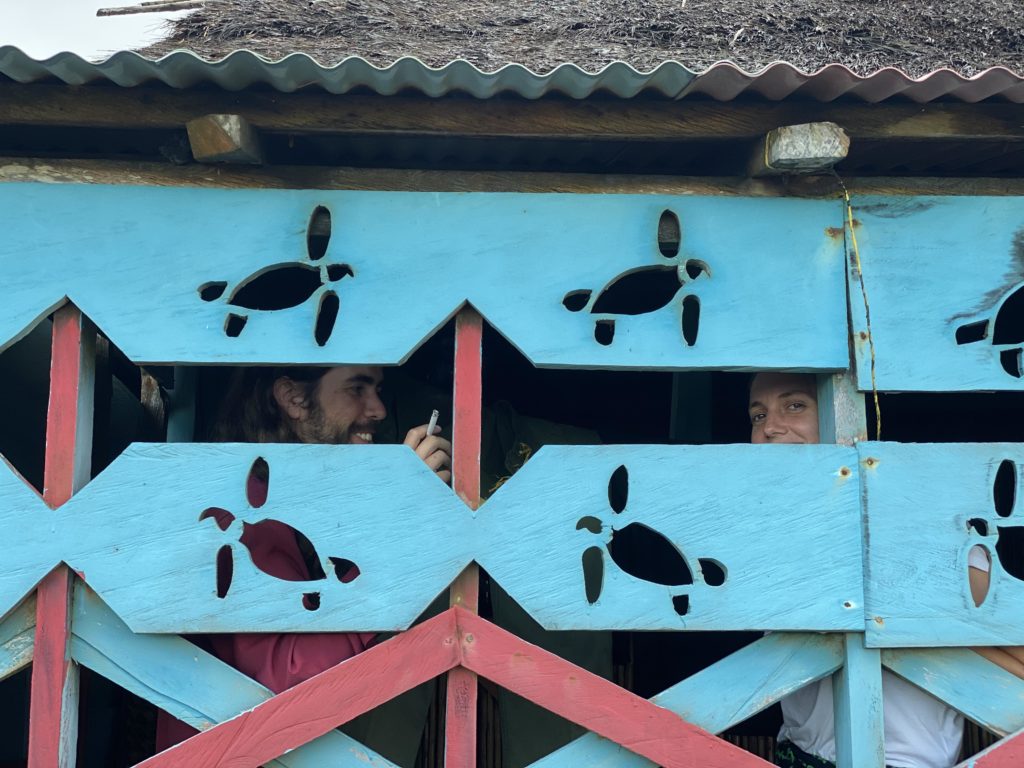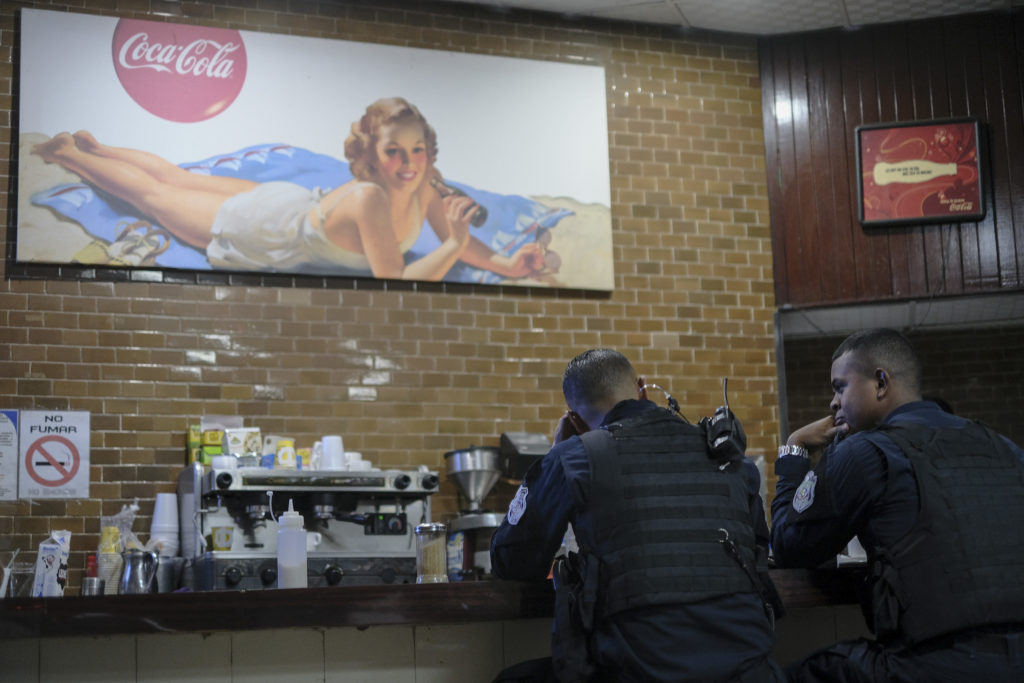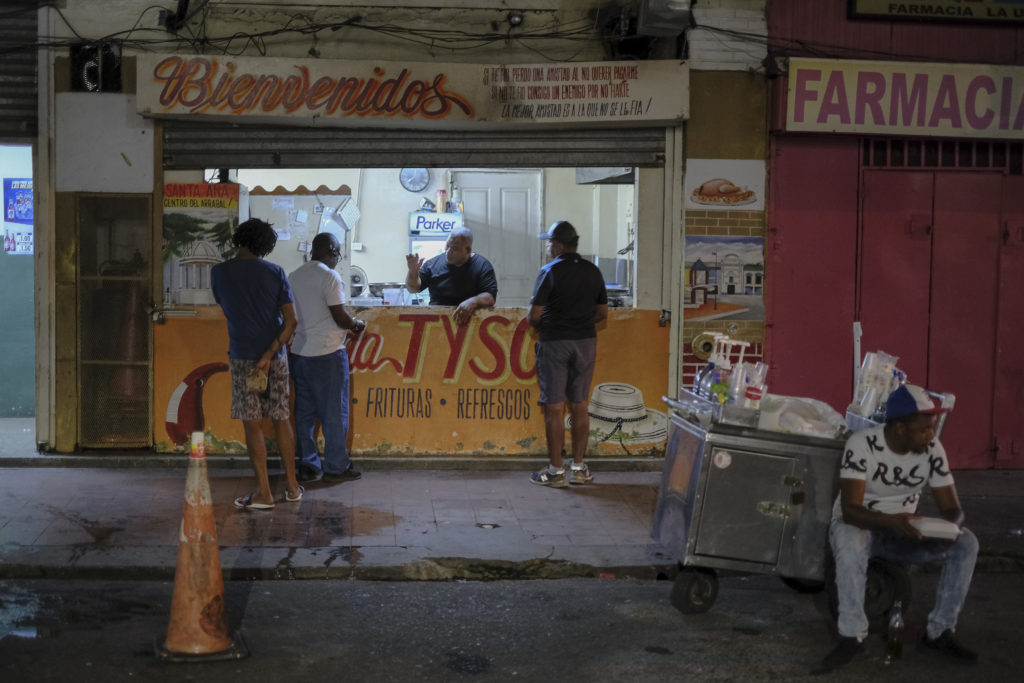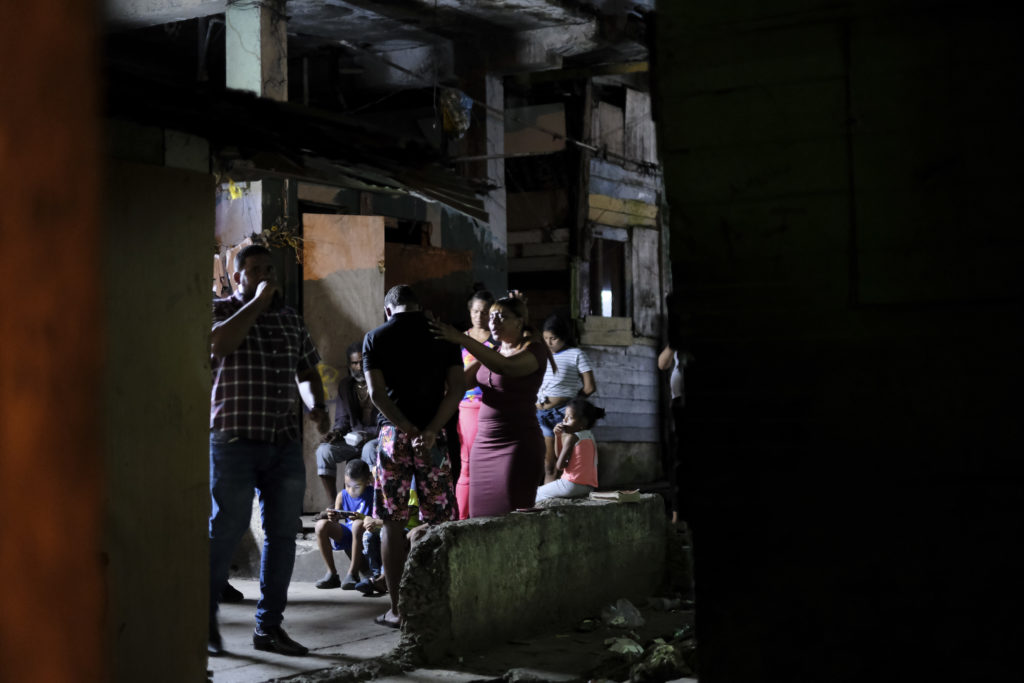Time here is defined by mealtimes and larger village events. We are apprised of what will happen the next day just the day before. Schedules are made to be malleable. Today we are looking forward to welcome Maria, the last member of the residency. She couldn’t make the flight on Thursday because it was full. I think there was space for no more than seven passengers on the plane.
Today is also a birthday in the village and there will be a fire, which I believe will be a communal gathering. There will also be beer. This last is significant because beer is generally only sold and consumed on the weekend. The Guna are very strict on this. While foreigners aren’t subject to the same restrictions, nevertheless we feel we should observe them as well out of a sense of solidarity.
Part of breakfast this morning is arepas, a kind of flatbread made of corn. There are many different ways of making corn, and Aida, Nacho’s daughter-in-law, fries the palm-sized puffs. They are like flattened muffins, slightly grainy in texture and utterly delicious. We eat them with a sunny side up, dipping the arepas in the runny yolk. As usual, there is fruit. This morning it is pineapple and oranges.
Nacho and Luz head off to Puerto Obaldía to wait for the plane that will be bringing Maria. I decide to shave my head. It is fuzzy. Luis helps me boil a pan of water, and I shave in full view of Nacho’s household. The kids gather around, fascinated by my headblade, while the novelty of a foreigner never seems to wear off for the children. They are polite though, never invasive.
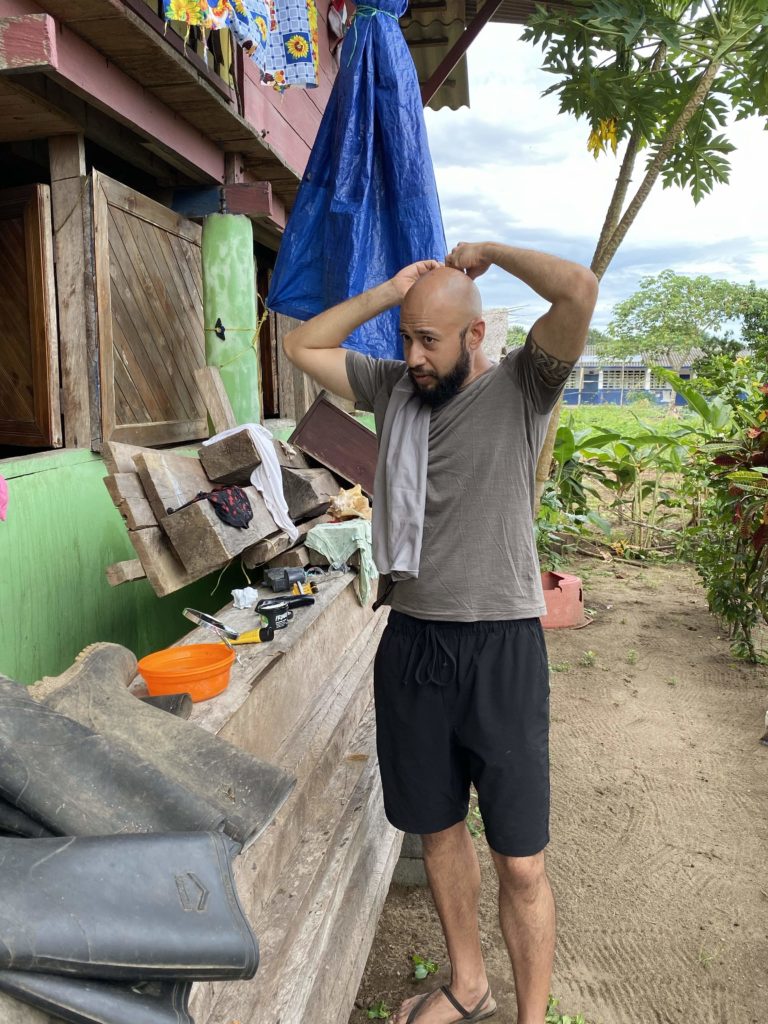
The children here are magical. The village has 200 children out of a population of about 600. The children are everywhere, running around from sea to shore to hut. They are insatiable but also highly trained, helping to take care of younger siblings, carrying wooden washing boards down to the river and even helping to cook in the kitchen. A far cry from children in cities, who are thrown from school to enrichment class with hardly a chance to breathe. It’s all about assessment and over-learning. At night in Singapore, anxious parents gather outside enrichment centers, desperate to hear from teachers about what new skill the students have learned that day.
In Armila, children swim in the sea, unbound. No one watches over them. Learning is a kind of diffusion, watching and mimicking their elders. The end of the world could come, and methinks Armila would carry on without a care.
The weather these days is changeable. Morning is bright and blazing, the right amount of cloud in the sky. Tourists would call this paradise. By lunchtime, distant thunder speckles the horizon and a light rain begins to fall. It keeps us fluid, uncertain. What we want to do tomorrow may not be what we end up doing. It also keeps us shapeless, ideas slip in and out. For someone so fixed on projects, I find myself productive and yet loose, happy to read or chat with the others
I am in awe of Ocean Vuong’s memoir/long poem/novella, ‘On Earth We Are Briefly Gorgeous,’ One of five books I have brought with me. His writing is dense with detail yet twists into unexpected turns of phrase. Here is just one example:
“The truest ruins are not written down. The girl Grandma knew back in Go Cong, the one whose sandals were cut from the tires of a burned-out army jeep, who was erased by an air strike three weeks before the war ended—she’s a ruin no one can point to. A ruin without location, like a language.”
The first statement is a humdinger. Deep and infinitely reflective. Then he goes on to enact a memory, one that pulsates with war and death and loss. Something absolute and heart wrenching. He offers just three details about her, how and where Grandma knew her, what her sandals were made from and how she died. Then he ends this memory by comparing erasure to a ruin that does not exist, and finally comparing it to a language.
How does one even write to that point? And all this as an aside in a passage where he recounts his journey home after learning about the death of his friend and lover, Trevor. It is a passage about silences; he doesn’t go to Trevor’s house and when he returns to his own house he doesn’t speak to his mother in Vietnamese, but only in English, a tongue distanced.
It is an implicit form of narrativity and meaning making that is rare indeed. I feel absolutely pedestrian by comparison. Ocean Vuong sets a bar that ceases to exist the moment he writes.
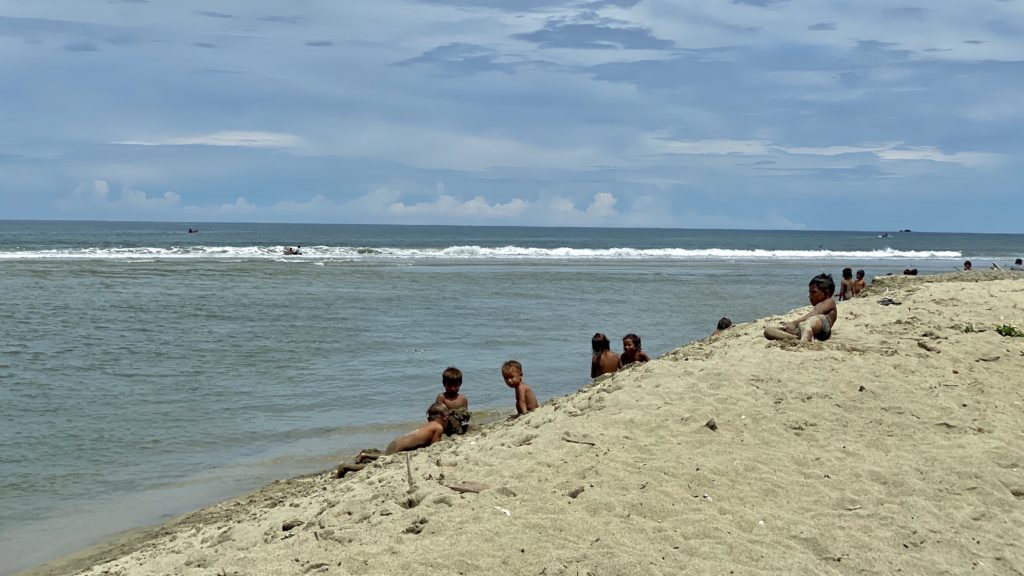
Maria is a trained concert pianist, just like Luis. She is now a performance artist and speaks Spanish. Only Caroline and I don’t speak the language. Even Charlotte, from France, understands though she can’t speak. It does mean that certain swathes of the conversation pass me by, so I focus instead on gesture and tone. The lilt and heft of voice.
In the afternoon, Nacho begins the first of his informal lectures. This first one is on how the Guna people came to have their own autonomous region. It is an amazing story of grit, foresight and a refusal to compromise. It also emphasizes the importance of not giving up on the land you have been given.
History of the Guna (as told by Nacho Crespo)
The Guna had a large territory back when Panama was part of Columbia. Guna territory stretched from Shark Cape to Carti. The territory was called San Blas Islands, also known as the Guna Yala.
When Panama became a republic, they wanted to protect their borders, so they brought people from Gabon to be police men and to settle the Guna territory.
The government wanted to integrate the Guna territory, but it became an imposition on the Guna,. They had to give up their language, clothing and rights. In return, they were taxed and were subject to violence. They were even forced to adopt Roman Catholicism as their faith.
In 1925, the Guna Yala declared war on the national police who were stationed in their territory. This did not come out of the blue. The Guna had spent 12 years observing the police. On 25 Feb, 1925, the Guna attacked during a carnival, when the police were relaxed and not on their guard. The Panamanian government sent an army, but the Guna had shrewdly made a deal with the US government beforehand to back their revolution. The Panamanian government closed the border with the Guna, but they were self-sufficient and resisted for 13 years.
In 1938, Panama decided they had to make the Guna Yala part of the country, but the latter insisted that they need ed to have, in writing and in law, a defined autonomous region.
Notable highlights in Guna history:
1968 – The first time a president in Panama involved the working class and indigenous people in politics
1980 – Two MPS who are Gunas and 5 representatives who are Guna Yala were in parliament
1997 – a Guna MP demanded that San Bas be officially changed to Guna Yala (which means Guna territory).
There are 49 communities of the Guna Yala. Each one has 5 representatives. They meet as a General Congress two times a year. To develop an independent economy, the Guna started to build a tourism infrastructure in the country, sending their young people overseas to gain expert knowledge. The Guna also want to revise the education system: the first three years in school would be taught in Guna, not Spanish. There is no private property for the Guna. By law, you cannot sell land to another foreigner.
The three main tools that the Guna use to confront the world are language, religion and education. They learn the language wherever they go, understand faith and commit themselves to learning about another country. But education beyond the Guna comarcha, which was seen as a tool, became a threat because of brain drain. T
The Panamanian government found traces of gold on Guna land and wanted to mine, but they were stopped. The Guna believed that was is under the ground also belongs to them, this informs their mythology.
Tourism is another double-edged sword for the Guna. If the Guna are poor, they are poor by choice, because land is abundant. The road that connected the Guna at Carti brought tourism and created a big impact . On many islands, their way of life changed and the Guna forgot their old ways. Money brings corruption and greed.
If a man doesn’t have a horse, he has no spirit If a group of people have no land, they have no spirit.
Guna Proverb
At dinner, the fish we are eating (each one has a small whole fish) was caught by a blind fisherman. After dinner, Nacho opens a bottle of Abuelo rum and we share shots topped with a squeeze of lime, freshly plucked by Luis from the tree behind the house.
There are bottles of Abuelo rum on the beach, and this leads us into a general discussion about the drinking habits of the Guna. Apparently, alcohol is tightly controlled here. The congress buys cartons of beer for USD 11 from a small duty-free store on the very edge of Panama. The beer, MF (Luz jokes that it stands for mother fucker), is only for export, but the Guna have wrangled an agreement to buy a set number of cartons each week, around five. The beer is then sold to different houses, like a co-op, at USD$15 a carton. Each house then sells a can at $1 each. This helps to divvy up the profits and ensures that no one family has a monopoly on beer. And the profit the council makes is used to affect repairs and maintain the village. Drinking is generally allowed only on weekends and drinking on the streets (when it isn’t a festival) is frowned upon. This weekend, the village is really quiet as everyone is gearing up for the chicha ceremony.









